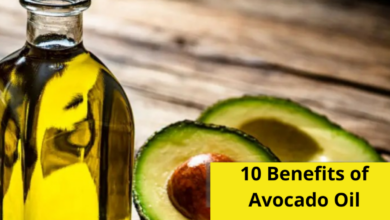Treating Vitiligo with DietLast

The Truth Behind the Vitiligo Diet
What is Vitiligo?
Vitiligo, pronounced as “vit-ill-eye-go,” is a skin condition characterized by the appearance of white patches on the skin across the body. This condition is caused by the destruction of melanocytes, the cells responsible for producing pigment or skin color. Although white patches are the primary symptom, vitiligo can also affect the mucous membranes of the mouth, nose, and eyes.
The exact cause of the condition remains unknown, but it is believed to be an autoimmune disorder. Most people tend to develop vitiligo between the ages of 20 and 40, and it is often seen in families. Vitiligo may also be associated with other conditions, such as thyroid dysfunction. Generally, vitiligo is physically harmless; it does not cause physical pain or pose any health risks.
Causes of Vitiligo
As mentioned, the cause or causes of vitiligo are still unknown. However, scientists believe the condition is an autoimmune disease. Autoimmune diseases occur when the immune system attacks the body instead of protecting it. In the case of vitiligo, the immune system may attack and destroy melanocytes in the skin.

Beauty is not just about appearance, but how you handle the challenges you face
Other studies have introduced additional theories regarding potential causes of vitiligo, though some of these theories lack substantial evidence. For example, many experts trace the condition through family lines, suggesting it may be hereditary.
Some scientists believe that, rather than an autoimmune disorder, melanocytes may simply self-destruct. Others think that something as simple as sunburn or an emotionally traumatic event could trigger vitiligo.
Who Can Develop Vitiligo?
Generally, anyone can be affected by vitiligo. People tend to develop it in their 20s to 40s, but the condition can appear at any age. Individuals of any race or gender can develop vitiligo, though it tends to be more noticeable in people with darker skin tones.
Vitiligo is often observed in families, so you may be at risk if a parent has been diagnosed with the condition. However, this is still unlikely. Vitiligo also appears to be linked to certain autoimmune diseases, such as hyperthyroidism. If you have an autoimmune condition, you may be more prone to developing vitiligo.
Symptoms of Vitiligo
The main symptom of vitiligo is the appearance of white patches on the skin. These patches may appear more frequently or commonly on areas of the skin exposed to the sun.
Common areas where these white patches appear include the hands, feet, arms, face, lips, armpits, groin, mouth, eyes, nostrils, and navel. People diagnosed with vitiligo may also experience premature graying of hair, and those with darker skin may notice depigmentation inside their mouths.
Fortunately, vitiligo is essentially harmless, and its symptoms only affect a person’s appearance. However, while the condition may not cause physical pain, individuals with vitiligo may experience emotional or psychological distress due to the appearance of the patches.
On this note, some people have also reported developing more white patches after experiencing physical or emotional stress.
How is Vitiligo Diagnosed?
Although the main symptoms of vitiligo may be easy to identify, doctors will still ask several questions and conduct tests to confirm the diagnosis. These questions may relate to your family and medical history, as well as recent rashes, sunburns, stress, sensitivities, and other relevant factors. Physical tests to rule out other issues may include a small biopsy or sample of unaffected skin, blood tests, and possibly an eye exam.
How to Treat Vitiligo
Since there are no serious medical symptoms associated with vitiligo, treatments are primarily aimed at making the skin appear more even-toned. Several types of treatments are available, and the chosen treatment will depend on the condition of your patches and your personal preference. It’s important to note that some treatments may cause negative side effects and may take a long time to work (if they work at all).
Treatments may include medications, surgeries, or other options. For example, you might use a skin cream, take oral medications, or undergo ultraviolet light therapy. One medical treatment involves depigmenting the rest of your skin to match the white patches caused by vitiligo. Surgical options like skin grafting or tattooing the patches are also available.
Treating Vitiligo with a Healthy Diet
You may have heard of a vitiligo diet and wondered what it entails. Although scientists have not recommended or tested a specific diet for treating vitiligo, there are certain foods you can eat or avoid that may help improve your condition. Compared to other treatment options, the idea of a healthy, natural diet is very appealing, especially when considering surgical procedures like skin grafting.
Managing vitiligo through diet focuses on three areas. First, you should avoid foods that negatively affect the immune system, as vitiligo is linked to autoimmune disorders like thyroiditis. You should also avoid foods containing certain antioxidants, including hydroquinones. These antioxidants are a type of phenol that may destroy melanocytes or pigment-producing cells.
ealing starts from within, so pay attention to what you eat and drink
Finally, you should seek out foods that promote melanin production. This is supposed to increase the number of melanocytes in your skin and theoretically restore pigment to the white patches caused by vitiligo. However, it’s important to note that this process takes a long time, and results won’t be seen overnight.
There are many foods to avoid if you’re trying to treat vitiligo with a healthy diet. Oranges and other citrus fruits contain high levels of hydroquinones, which attack pigment cells. Studies have also shown that turmeric may have negative effects on vitiligo.
You should also avoid fast food, such as processed snacks or anything from fast-food chains. These foods may cause oxidative stress in the body, meaning cells are destroyed faster than they should be. By eliminating these fast foods from your diet, you may see slow improvements in vitiligo.
Fortunately, there is a long list of foods you should try to eat more of. The nutrients in these foods may promote melanin production or enhance existing melanin, potentially helping to improve symptoms.
Some of these foods include whole grains, chickpeas, potatoes, wheat, fenugreek, radishes, beets, carrots, spinach, walnuts, almonds, pistachios, dates, figs, mangoes, apricots, and red peppers.
Other foods to avoid include plums, grapes, guava, blueberries, pears, lemons, watermelon, milk, buttermilk, cashews, alcohol, caffeine, chocolate, soda, fish, and any oily or spicy foods.
Here’s a summary of the types of foods to eat and those best avoided.
Foods to Eat
- Fruits: While many fruits should be avoided, you can safely enjoy apricots, mangoes, figs, and dates.
- Vegetables: Some of the best fresh vegetables for vitiligo include spinach, carrots, beets, cabbage, cauliflower, green beans, bitter gourd, and red peppers.
- Whole Grains: Add plenty of whole grains to your diet, including oats, couscous, corn, quinoa, and brown rice.
- Protein: While a plant-based diet is recommended, some lean meats are acceptable, such as wild fish, lean turkey cuts, skinless chicken breast, and eggs. Plant-based proteins can be obtained from lentils, chickpeas, beans, and mushrooms.
- Herbs and Spices: Use plenty of spices, including basil, rosemary, thyme, coriander, black pepper, cloves, cinnamon, nutmeg, and cardamom.
- Beverages: Water, fruit juices, and allowed vegetable juices are fine.
Foods to Avoid
- Fruits: Avoid oranges, lemons, limes, gooseberries, nectarines, peaches, watermelon, grapes, guava, papaya, pears, tamarind, and any other fruits high in vitamin C.
- Vegetables: Avoid eggplant, green peppers, tomatoes, garlic, and onions.
- Protein: Avoid pork, beef, and most fish.
- Dairy: Avoid milk and buttermilk.
- Beverages: Avoid carbonated or sweetened drinks, pre-packaged fruit juices, and fresh fruit juices high in vitamin C. Also, stay away from alcohol and coffee.
- Spices: Avoid turmeric.
- Other Foods to Avoid: Processed foods, packaged or canned foods, oily foods, spicy foods, and chocolate.
Other Home Remedies for Vitiligo
Before trying any home remedies to alleviate vitiligo symptoms, consult your doctor to ensure the chosen remedy won’t interfere with any medications or health issues.
There are several supplements you can take that may help manage vitiligo symptoms. For example, tyrosine, an amino acid, aids in melanin production, so tyrosine supplements may be beneficial. B vitamins also support melanin production, so a B-complex supplement may be helpful.
Copper, a mineral, may also help the body produce more melanin. Other supplements to consider include ginkgo biloba, zinc, and selenium. Vitamin D is a nutrient commonly deficient in many modern diets, so supplementing with it may also be beneficial. Some studies have shown a link between vitiligo and low levels of vitamin D in the blood.
Ginkgo biloba is a particularly interesting natural remedy, as research has already shown its potential. Known for its natural anti-inflammatory benefits, ginkgo is a common remedy for circulatory issues. One trial examined the effects of the herb on people with vitiligo and found that 10 participants regained some of their natural skin color. (1)
You can also consult a holistic healthcare practitioner to explore more unconventional natural treatment options. For example, psoralea seeds can be soaked in ginger juice and applied to the patches.
Tamarin seeds, radish seeds, basil leaves, lemon juice, babchi seeds, vinegar extract, and neem juice are other natural substances some people claim may help treat vitiligo symptoms at home. A holistic healthcare practitioner can provide better advice on herbs and substances suitable for your needs, as well as the correct methods of application to achieve desired results.
Frequently Asked Questions
- At what age does vitiligo start?
Vitiligo can begin at any age but typically appears between the ages of 20 and 30. The condition is characterized by white patches that often start on the face, forehead, neck, elbows, knees, or hands but can later spread across the entire body. - Can vitiligo be cured?
There are many medical options for treating vitiligo, including topical creams, oral medications, and UV light therapy. However, treatment may take several years, and there is no guarantee your skin will fully return to its natural color. - Is vitiligo an autoimmune disease?
Experts believe vitiligo is one of many autoimmune diseases, including rheumatoid arthritis, lupus, and type 1 diabetes. Autoimmune diseases occur when the body’s immune system attacks itself. In vitiligo, melanocytes, the cells responsible for pigmentation, are affected. - Is vitiligo painful?
Vitiligo can be embarrassing and affect a person’s confidence, but it is considered physically harmless. Some people report mild irritation or discomfort, but the majority feel no physical pain. - Can diet help treat vitiligo?
There is no strong scientific evidence proving that a healthy diet can treat vitiligo. However, since it is an autoimmune condition, it is wise to follow a healthy diet rich in beta-carotene, phytochemicals, and other natural antioxidants. A good diet can boost your immune system and may help restore your skin’s natural color.
Final Thoughts
- Vitiligo is a condition that causes white patches of skin anywhere on the body. It is believed to be an autoimmune condition.
- Other potential causes of vitiligo include mineral deficiencies, stress, and exposure to chemicals.
- There are several treatment options, but they may take months or years to work.
- Skin depigmentation is not painful but can cause emotional issues, including depression and social anxiety.
- There are several potential home remedies, including lifestyle changes and herbal treatments.
- Dietary changes can help boost the immune system and may aid in restoring pigmentation. Unfortunately, there is no solid scientific evidence that they will work.





